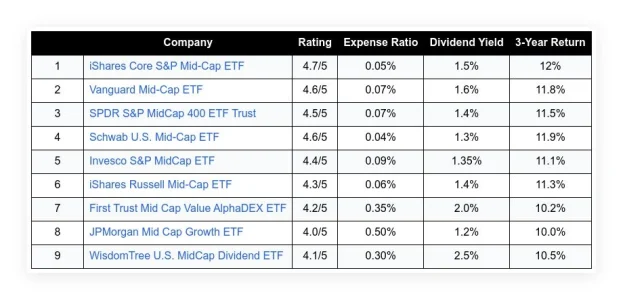If you are facing a mountain of student loan debt, you know firsthand how daunting it can be to balance your repayment obligations with other financial goals. The good news is that you can make progress on multiple financial fronts. However, you’ll need a rock-solid plan.
Below, you’ll find free financial tips to help you repay your student loans and achieve other financial goals.
Table of Contents
ToggleUnderstanding Your Student Loan Landscape
Step one involves understanding your student loans to plan how to pay them off. Here’s what you need to know.
Types of Student Loans
Look at all of your loans and categorize them by type. Federal loans offer benefits like income-driven repayment plans and potential forgiveness options. The average interest rate for undergraduates with federal student loans for 2024 to 2025 is 6.53%, and the rate for graduate or professional federal student loans is 8.08%.
Private loans often have higher interest rates (averaging between 4% and 16%) and more rigid repayment requirements. Therefore, you may need to prioritize your private loans.
Interest Rates and How They Impact Student Loan Repayment Strategies
Federal student loan rates have relatively low interest rates, whereas private options can vary significantly. Once you’ve grouped your loans by type, list the balance, monthly payment, and interest rate for each. This will give you a clear view of what you owe and your repayment timeline.
Available Repayment Plans and Forgiveness Options
Find out whether any of your loans offer forgiveness options or flexible repayment plans. Using income-driven options can lower your monthly payments and free up cash to pursue your other financial goals.
Importance of Conducting a Comprehensive Loan Audit
Conduct a detailed audit to clarify your total debt, interest rates, and repayment terms. This information will be valuable as you create your repayment strategy.
Establishing Financial Priorities
The question is, what are your financial priorities? Do you want to buy a house in the next three years? Is your goal to eliminate all debt? Here are some tips to establish and achieve your financial priorities.
Emergency Fund as the Foundation
Building an emergency fund should be the first milestone on your financial journey. You should work to save three to six months of living expenses as protection against unexpected financial challenges. You can use this fund to avoid taking more debt in an emergency. If you must tap into your emergency fund, replenish it as soon as possible.
High-Interest Debt vs. Student Loans
Prioritize paying off high-interest debts like credit cards before focusing on student loans. Getting rid of high-interest debt first will reduce the total amount you pay in interest. Alternatively, you can tackle your smallest debts first to build momentum.
Identifying Personal Values and Your Timeline
Take time to define your goals and timeline and ensure that they are realistic. Set smaller milestones to break up multi-year goals and keep yourself on track.
Creating a Personal Finance Hierarchy
Building a personal finance hierarchy based on your circumstances will help you allocate resources effectively. Essentials like housing and food should receive the highest priority. On the other hand, things like vacations or non-essential purchases should be on the opposite end of your hierarchy.
Strategies for Simultaneous Progress
So, how do you make progress toward your financial goals while addressing student loan repayment? Here are a few options to explore:
Snowball vs. Avalanche
The snowball and avalanche methods are two popular strategies for paying off debt. The snowball method starts with your smallest debt first, so you can rack up a few quick wins and build momentum. When you pay off a debt, roll the money from that monthly payment into the next lowest debt.
The avalanche method first targets debts with the highest interest rate. This method does not provide quick wins, but it can save money over time by reducing the total amount you pay in interest.
Income-Driven Student Loan Repayment Plans
You may be eligible for income-driven repayment plans if you have federal student loans. These plans can reduce monthly payments and free up cash for other goals. However, read the terms and conditions of these agreements before you push out your repayment timeline.
Debt-to-Income Ratio Considerations
Your debt-to-income (DTI) ratio reflects how much of your gross monthly income is allocated to different expenses, such as housing and debt payments. Maintaining a healthy ratio is vital for significant purchases like a home.
Automation Techniques to Achieve Consistent Progress
Set up automatic transfers to your savings account and automatic payments on certain debts to help you stay accountable. Automatic transfers can promote consistent progress and reduce the risk of missed payments.
You can also divert part of your direct deposit directly into another account. Consider making an account separate from your primary checking and savings accounts. That way, the extra money you deposit will be out of sight and out of mind.
Retirement Savings While Paying Down Debt
As a young investor, you have much more power than you might think. The key is to start saving for retirement as early as possible. Here are a few ways to do that.
Treat Employer Matching Contributions Like “Free Money”
If your employer offers matching 401(k) contributions, ensure you pay enough to receive the full benefits. For instance, if your employer offers a 3% 401(k) matching, contribute at least that much to your account. Otherwise, you are leaving money on the table.
Tax Advantages of Retirement Accounts
A retirement account is a must-have to achieve financial independence. IRS and 401(k)s offer tax benefits that can enhance your long-term savings and reduce your annual tax obligation. Compare each option to find out which setup is the best fit for your financial goals.
Compounding Interest: The Argument for Early Investing
Starting early allows you to grow your investments over a more extended time period. Making modest contributions can lead to a large sum over 30 or 40 years of investing. On the other hand, getting a late start can leave you unprepared for retirement.
Minimum Effective Contributions for Long-Term Growth
If you are on a tight budget, aim to contribute at least a small percentage consistently to your retirement account. Don’t ignore the “I’ll worry about retirement later” mindset. Start saving now and increase your contributions as you pay off debts or grow your income.
Housing Goals and Student Loan Debt
Student loan debt can impact your housing aspirations. However, that doesn’t mean you won’t be able to buy a house while you have student loans. It simply means that you may need to think outside the box. Here are a few factors to consider.
Impact of Student Loans on Mortgage Eligibility
Lenders assess your DTI to determine whether you are eligible for a mortgage. If you have high monthly loan payments, it can drive up your DTI and limit how much house you can afford.
First-Time Homebuyer Programs
Look into programs offering assistance with down payments. These programs reduce your out-of-pocket obligation and can make it easier to afford a house.
Rent vs. Buy Calculations
Rent vs. buy calculators help you better understand your financial situation and the housing market to decide whether now is the right time for you to buy. Sometimes, renting can be a better option until you build your emergency fund and eliminate a few debts.
Creative Approaches Like House Hacking and Co-Buying
You may need to get creative when buying a home. Adopting smart budgeting tactics and co-buying with someone you trust can make homeownership more attainable.
Practical Budgeting Techniques
Effective budgeting can help you repay your debt faster while building your savings. Here are a few different budgeting techniques to consider.
Zero-Based Budgeting for Debt Repayment
The zero-based method allocates every dollar you make to specific expenses, savings, or debt payments. Once you have mapped out your budget for the month, you should have a balance of $0. The idea is to plan and account for everything to avoid wasteful spending.
The 50/30/20 Budget Adaptation for Debt Holders
Contrary to popular belief, you can move toward financial security on a low income or with a lot of debt. The 50/30/20 approach is one way of doing that. This approach allocates 50% of what you make to your needs, 30% to what you want, and 20% to repaying debt and saving money. You can adjust the 20% as necessary to prioritize debt — once you’ve built your emergency fund.
Tech and Apps for Budget Management
Download a budgeting app to track spending and set goals easily. These apps visualize how much you spend. Some applications even link to your bank account. The better you understand your spending habits, the easier it will be to reach your objectives and get out of student loan debt.
Finding “Hidden Money”
Most people have hidden money in their budget; they just have to look for it. Review your expenses to find areas to cut back. For example, you may eat out three times per week and bust your budget. In this case, simply limiting yourself to one night out per week could free up hundreds of dollars per month.
Increasing Your Income
Boosting your income can accelerate your progress toward debt freedom and financial security. There are several ways to increase your monthly earnings, including the following:
Side Hustles Specifically Beneficial for Student Loan Repayment
Side hustles can help you build a nest egg and repay your debt. Gig jobs, especially those that open the door for tax write-offs, can help you pay off debt faster. Creating a blog or freelancing are other great options.
Career Advancement Strategies
Seek promotions or further education to increase your earning potential. This long-term strategy can help improve your quality of life and support your long-term financial health.
Monetizing Your Skills
If you have a unique skill, why not monetize it? Explore opportunities to teach, tutor, or take on side work.
Allocating Windfalls and Raises Strategically
Use it wisely if you earn unexpected income, such as a tax refund or bonus. Allocate the money toward debt or savings rather than treating yourself to a surprise getaway.
Make a Plan and Follow Through
Balancing student loan repayment with other financial goals requires thoughtful planning and disciplined execution. However, it is possible, and now you have the knowledge you need to succeed.
Don’t wait. Start building a plan today and put it into motion. Small, consistent steps can lead to substantial financial achievements in the future.
















